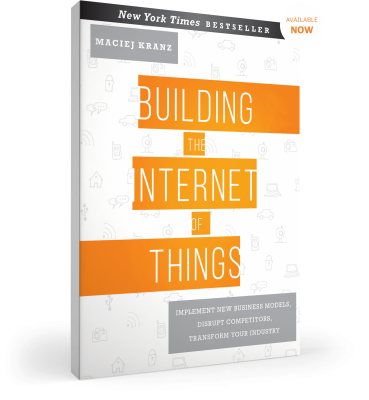With Alexa, Google Home, smart TVs and connected cars, consumer IoT applications are getting a lot of buzz. But it is too early to gauge the actual value of these solutions beyond their “cool” factor—we are still experimenting with the connected home value propositions in terms of building end-user loyalty and data mining opportunities for vendors. And we’re still asking, is having your washing machine ordering detergent really something consumers want to do?
In the business-to-business (B2B) sector, however, IoT is quietly generating measurable and substantial value. How much value? The estimates of IoT impact vary widely, with several analysts projecting trillions of dollars in value over the next five to 10 years. By 2020, IDC forecasts IoT global spending will reach $1.29 trillion. But for you, what matters is the value of IoT in your own organization. Specifically, you can expect fast payback of your IoT investments generated by reduced labor costs, lower production costs, increased productivity, improved quality, and better, faster decision making. Subsequent projects can lead to new value propositions (such as mass customization or personalization), new markets, and better understanding of the needs and concerns of the people who use your products or services.
So how can a company begin to realize that value? Over the last few years, I have met with dozens of customers across the world and in every industry. Many of them have not heard about IoT, or are confused about how they can implement IoT for business impact. But there are also thousands of customers who have already started on their IoT journey. I have looked at the use cases these customers have picked as their first small projects, and grouped them into four categories, which I call fast paths to payback. Here is a quick summary:
- Connected operations and remote monitoring can increase efficiency, lower costs, and improve employee productivity.
Connected operations: Rockwell Automation connected assembly lines and operations in 20 manufacturing plants, then connected those plants to each other and to its enterprise infrastructure. As a result, the company reduced its inventory cycle from 120 days to 82 days, reduced rejected parts by 50 percent, and increased on-time delivery to 98 percent.
- Remote operations: A dairy company in India began remotely monitoring the freezers in its 150 ice cream stores, providing alerts in case of power outages. The company began realizing a payback within a month and saw a five-fold return on its investment within 13 months.
- Predictive analytics: My employer Cisco is using energy analytics software to improve energy efficiency and reduce costs in manufacturing plants. Our supply chain team deployed a network of 1,500 sensors across one factory floor, then used predictive analytics to identify problem areas. They reduced energy consumption by 15 to 20 percent in the first plant, and are implementing these capabilities in more than 20 others, with a goal of 30 percent energy reduction.
- Predictive maintenance: Global mining company Rio Tinto uses sensors to monitor the condition of its vehicles, identifying maintenance needs before they become problems—and saves $2 million a day every time it avoids a breakdown.
These four well-proven scenarios are ideal candidates to help you get started on IoT projects. Armed with an early success, companies can then build momentum and begin to tackle more transformative IoT solutions. Here, IoT provides rich opportunities across many domains, including:
- New business opportunities and revenue streams—Connected operations combined with 3D printing, for example, are making personalization and mass customization possible in ways not imagined a few years ago.
- New business models—IoT enables equipment manufacturers to adopt service-oriented business models. By gathering data from devices installed at a customer site, manufacturers like Japanese industrial equipment maker FANUC can offer remote monitoring, analytics and predictive maintenance services to reduce customer costs and improve production uptime.
- New business structures—In many traditional industries, customers have typically looked to a single vendor for a complete end-to-end solution—often using closed, proprietary technologies. Today IoT, with its flexibility, cost, and time-to-market advantages, is driving a shift to an open technology model where solution providers form an ecosystem of partners. As a result, each participant provides its best-in-class capabilities to contribute to a complete IoT solution for their customers.
- New value propositions for consumers—IoT is helping companies provide new hyper-relevant customer experiences and faster, more accurate services than ever before. In healthcare, for example, remote monitoring capabilities can provide in-home diagnostics and prompt patients to take their medication. A 24×7 stream of real-time data reduces the need for elderly or disabled patients to visit the hospital, while alerting caregivers when an intervention is needed.
So, while industrial IoT hasn’t garnered the headlines of its consumer-oriented cousin, it is real today and is already having a tremendous impact. It is gaining traction across many industrial segments, logistics, transportation, and smart cities. Other industries, such as healthcare, retail, and agriculture are following closely. We are just beginning to understand IoT’s potential. But one thing is certain: 10 years from now, you’ll have to look hard to find an industry that has not been transformed by IoT.
This article was originally published on Cisco Innovation Blog

Available Now
Building the Internet of Things by Maciej Kranz provides front-line business decision makers with a practical handbook for capitalizing on this latest transformation. Focusing on the business implications of Internet of Things (IoT), this book describes the sheer impact, spread, and opportunities arising every day, and how business leaders can implement IoT today to realize tangible business advantages.